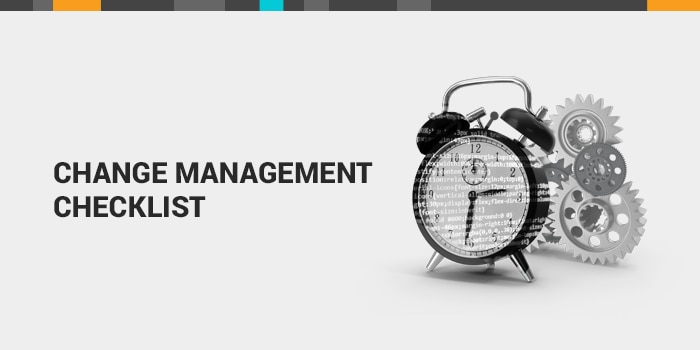For some, change is something to look forward to. For others, it may be scary and anxiety-inducing. If the latter describes your organization, it may be time to rethink your change management practice.
Changes are necessary in
ITSM. Whether standard or an emergency, if IT changes are not successful, the business could suffer in the long run. Performing changes allows IT pros and business leaders to be proactive when risks arise to minimize disruption and keep employees engaged in the work that counts. For many IT leaders, those necessary changes can be time consuming, difficult to track, and lacking consistent workflow and/or documentation—hence the anxiety.
This change advisory board (CAB) meeting is starting to become redundant. How can we proceed with these routine changes more efficiently?
This is a good question to ask yourself. Changes can be drawn-out and include steps that take too long if done manually. Not to mention they can lead to human error, inconsistencies, and even change failure. Here’s where
creating standard change templates can solve the issue.
Standard changes are generally low-risk with limited or no potential for downtime or outages. This might include standard maintenance to assets, updates that run in the background, or application access requests. In some cases, anyone in the organization can request a particular standard change.
Using templates that are based on your organization’s past experiences and
ITIL best practices can help you drive consistency and expedite change approvals and execution workflows. A standard change procedure should include pre-approval from the CAB, and it accounts for potential risks way ahead of when the change goes into effect. After the change request is received, there might be no additional need for approvals. It’s simply time to execute the change. These templates will prevent your CAB members from being bogged down by redundant and unnecessary approvals, and it will push these necessary services out to your organization quickly.
In an ITSM solution, first, make sure the changes are classified by priority. They can include some variation of low, normal, high, and critical. The basic template of each of these classifications should include:
- Change name
- What’s expected to take place/proposal
- The order of change tasks
- A description of the change
The security of our infrastructure has been compromised. This is an emergency and a change is needed immediately. How do we ensure success when the stakes are this high?
According to
ITIL 4, “emergency changes should be subject to the same testing, assessment, and authorization as normal changes, but it may be acceptable to defer some documentation until after the change has been implemented.”
Emergency changes shouldn’t be available to the average end user. Permissions should be segmented and only available to certain roles like IT security managers, change managers, etc. Standard change templates are structured and preapproved by the CAB. Certain parts from the standard change template can be applied to an emergency, but the latter requires “on the fly” decision making and doesn’t operate on a schedule. This, because the requester will be well-versed in the change that needs to happen and it will require as much detail as possible.
Emergency changes must be addressed carefully. If not handled properly, more incidents, problems, and risks can infiltrate the business and cause more damage than what was already done. Once the
change has been triggered,
- The change manager, in consultation with the change owner, will validate the emergency change.
- The change owner will gather the requirements and document any potential impacts of the change. Doing this will let change managers know if revisions to the change management process need to be made later on.
- CAB members can convene and outline details of the change.
- The change goes into approval.
- It can then be scheduled and deployed.
It’s key for change managers and owners to pay attention to the impact of the change once it’s been implemented for post-implementation review, and determining if a rollback plan is needed.
Change management should be a thoughtful process. The success or failure of changes will impact employees’ workflows and business continuity. Detailed change templates lays the foundation for successful change implementation and allows IT pros to adjust as needed.





